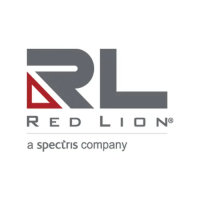4
STEP 1 SETTING THE JUMPERS AND DIP SWITCHES
The jumpers are accessible from the bottom of the controller. Needle-nose
pliers are needed to remove the jumpers. They should be set prior to installation.
To insure proper operation, the jumpers must match the controller software
configuration.
ANALOG DC OUTPUTS (OPTIONAL)
Analog Output 1 and Analog Output
2 can be configured for voltage (V) or
current (I), independent of each other.
Both V/I + and V/I - jumpers of the
same channel must be set for the same
type of output signal.
INPUTS
Channel A and Channel B can be
configured independent of each other.
Jumper position can be ignored for
thermocouple and millivolt inputs.
I2-
V2+
I2-
V2+
I1-
V1+
I1-
V1+
Analog
Output 2
Jumpers
Analog
Output 1
Jumpers
10V
20mA
RTD
10V
20mA
RTD
Channel A
Input
Channel B
Input
Channel B
Input Jumpers
Channel A
Input Jumpers
Analog Output 2
Jumpers (current)
Analog Output 1
Jumpers (current)
(RTD)
(As set from factory)
EMC INSTALLATION GUIDELINES
Although Red Lion Controls products are designed with a high degree of
immunity to Electromagnetic Interference (EMI), proper installation and wiring
methods must be followed to ensure compatibility in each application. The type
of the electrical noise, source or coupling method into a unit may be different
for various installations. Cable length, routing, and shield termination are very
important and can mean the difference between a successful or troublesome
installation. Listed are some EMI guidelines for a successful installation in an
industrial environment.
1. A unit should be mounted in a metal enclosure, which is properly connected
to protective earth.
2. Use shielded cables for all Signal and Control inputs. The shield connection
should be made as short as possible. The connection point for the shield
depends somewhat upon the application. Listed below are the recommended
methods of connecting the shield, in order of their effectiveness.
a. Connect the shield to earth ground (protective earth) at one end where the
unit is mounted.
b. Connect the shield to earth ground at both ends of the cable, usually when
the noise source frequency is over 1 MHz.
3. Never run Signal or Control cables in the same conduit or raceway with AC
power lines, conductors, feeding motors, solenoids, SCR controls, and
heaters, etc. The cables should be run through metal conduit that is properly
grounded. This is especially useful in applications where cable runs are long
and portable two-way radios are used in close proximity or if the installation
is near a commercial radio transmitter. Also, Signal or Control cables within
an enclosure should be routed as far away as possible from contactors,
control relays, transformers, and other noisy components.
4. Long cable runs are more susceptible to EMI pickup than short cable runs.
5. In extremely high EMI environments, the use of external EMI suppression
devices such as Ferrite Suppression Cores for signal and control cables is
effective. The following EMI suppression devices (or equivalent) are
recommended:
Fair-Rite part number 0443167251 (Red Lion Controls #FCOR0000)
Line Filters for input power cables:
Schaffner # FN2010-1/07 (Red Lion Controls #LFIL0000)
6. To protect relay contacts that control inductive loads and to minimize radiated
and conducted noise (EMI), some type of contact protection network is
normally installed across the load, the contacts or both. The most effective
location is across the load.
a. Using a snubber, which is a resistor-capacitor (RC) network or metal oxide
varistor (MOV) across an AC inductive load is very effective at reducing
EMI and increasing relay contact life.
b. If a DC inductive load (such as a DC relay coil) is controlled by a transistor
switch, care must be taken not to exceed the breakdown voltage of the
transistor when the load is switched. One of the most effective ways is to
place a diode across the inductive load. Most Red Lion products with solid
state outputs have internal zener diode protection. However external diode
protection at the load is always a good design practice to limit EMI.
Although the use of a snubber or varistor could be used.
Red Lion part numbers: Snubber: SNUB0000
Varistor: ILS11500 or ILS23000
7. Care should be taken when connecting input and output devices to the
instrument. When a separate input and output common is provided, they
should not be mixed. Therefore a sensor common should NOT be connected
to an output common. This would cause EMI on the sensitive input common,
which could affect the instrument’s operation.
Visit http://www.redlion.net/emi for more information on EMI guidelines,
Safety and CE issues as they relate to Red Lion products.
SERIAL DIP SWITCH SETTINGS
The DLC Serial Communications Settings can be set via DIP Switches or
through the serial communications port (software selectable). The software
selectable serial settings method using the serial communications port must be
set using “RLCPRO” or another software program to write to the DLC Modbus
registers (40401-40407). When using the DIP switches to configure the serial
settings, the Modbus mode is limited to “RTU” mode only.
SWA
BAUD RATE
PARITY
DEFAULT
M2802X
SWB: ADDRESS
X32
X128
X64
X4
X16
X8
X1
X2
M2802X
X64
X32
SWB: ADDRESS
X4
X1
X2
X16
X8
X128
SWA
DEFAULT
PARITY
BAUD RATE

